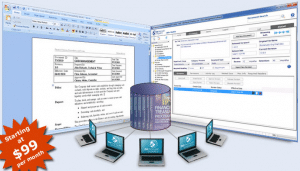How Do You Price a SaaS Product?

Software as a Service (SaaS) is the latest digital product as many companies look toward migrating their business to the cloud, Pricing is one of the key components of any SaaS product, as this business model relies on customer subscriptions to draw revenue. What factors are important in deciding how do you price a SaaS product?
7 Things To Consider When Pricing Your SaaS Product
The SaaS onboarding and service model for software provisioning creates a different relationship with customers, one which complicates price points. Key metrics, such as operating costs and perceived market value interact to make price points sometimes hard to decipher, yet a wrong move could see your revenue seriously drop. Nobody wants to guess what to price their SaaS product, but fortunately you don’t have to – here are seven tips for finding your right price.
1) Assess Your Operational Costs
New entrepreneurs often have only a vague sense of their operational costs which often leads them to underestimate what it has cost to develop their software. Setting your SaaS product price too low leaves your business vulnerable as you may not be covering costs. Assess what providing your software as a service will cost in the long run. Often, your margins will increase over time leaving a healthy income for your business.
2) Test Your Prices
Gathering analytics on how your price points affect market demand is an essential piece of data in any ecommerce strategy. “Sometimes price points can have an unpredictable impact on how people perceive your product,” says Tonya Black, a marketing writer at Write My X and 1day2write. “Running continual testing across several pricing options is key to finding the right price.” These could include discounts for annual subscriptions or different price points for levels of service. Stay keenly aware of the impact these price points have on demand.
3) Err High
It’s always easier to lower your price than to increase it as once your product is in the marketplace, the price point it begins with has a huge impact on the perceived value it has in the eyes of your customers. Give yourself a healthy margin to start with. If you need to lower your price in the future you can do this through flash sales or loyalty discounts, appealing to more price-sensitive customers. Remember that digital marketing is expensive, so plan accordingly.
4) Get Qualitative Information
Quantitative data on elasticity and demand can influence your price points, but don’t neglect a qualitative approach to your product. New entrepreneurs should especially prioritise conversations with customers about price and value. When you’re entering a new market it’s important to get a broad understanding of what customers are willing to pay, and there’s no better way to do that than by talking to them.
5) Keep A Margin For Marketing
“Although it’s tempting to enter the market at a cheap price point, undercutting the competition, this can lead customers to perceiving your product as a budget option,” says Jack Campos, a content blogger at Originwritings and Britstudent. “This impacts trust in your software in the long run.” Rather, factor a marketing budget into your margins so you can hit the ground running and indicate to your customers that value isn’t just about low prices.
6) Be Aware Of The Competitions
You can’t price your product in a vacuum of information about what’s already on the market. Be prepared to do in-depth research about what your competitors are offering and at what price. Standing out from the crowd can bring more customers to your product, but if your price is wildly divergent from your competitors at either end of the spectrum people will be inclined to treat your product as suspect. When entering the market, it’s important to meet cultural expectations of price.
7) Multiple Versions, Multiple Price Points
Don’t expect your software to function as a one-size-fits-all. To maximize your target market, one marketing tactic is to create several versions of your software so that you can target organizations that differ in size and budget. It’s often cheap to reconfigure your software to provide lower functionality in a bare-bones version, you’ll find yourself having built several products for the price of one and expanded your market in the process.
How to Price a SaaS Product
After all the hard work developing the best software you can, it’s easy to make pricing an afterthought. However, pricing impacts public perception and can lead to hard-to-budge impressions of your product. Get your pricing right and you’ll find success in the SaaS market.
Kendra Beckley is a business development manager and editor at Dissertation Writing Services and Nextcoursework.com. As a business consultant she helps organizations reach new markets, optimize processes and grow their revenue. She also writes for Phdkingdom.com.
















Pricing any product properly—not only a SaaS—does two key things: supports customers to buy and gives you the profit you deserve. That’s because without it, at least one of the two sides is at a loss. For instance, if customers assume you are charging more than they can pay, they would switch to competing SaaS products. Pricing your SaaS model right means you have a recurring revenue stream that puts your product’s portfolio value well beyond standard software products.